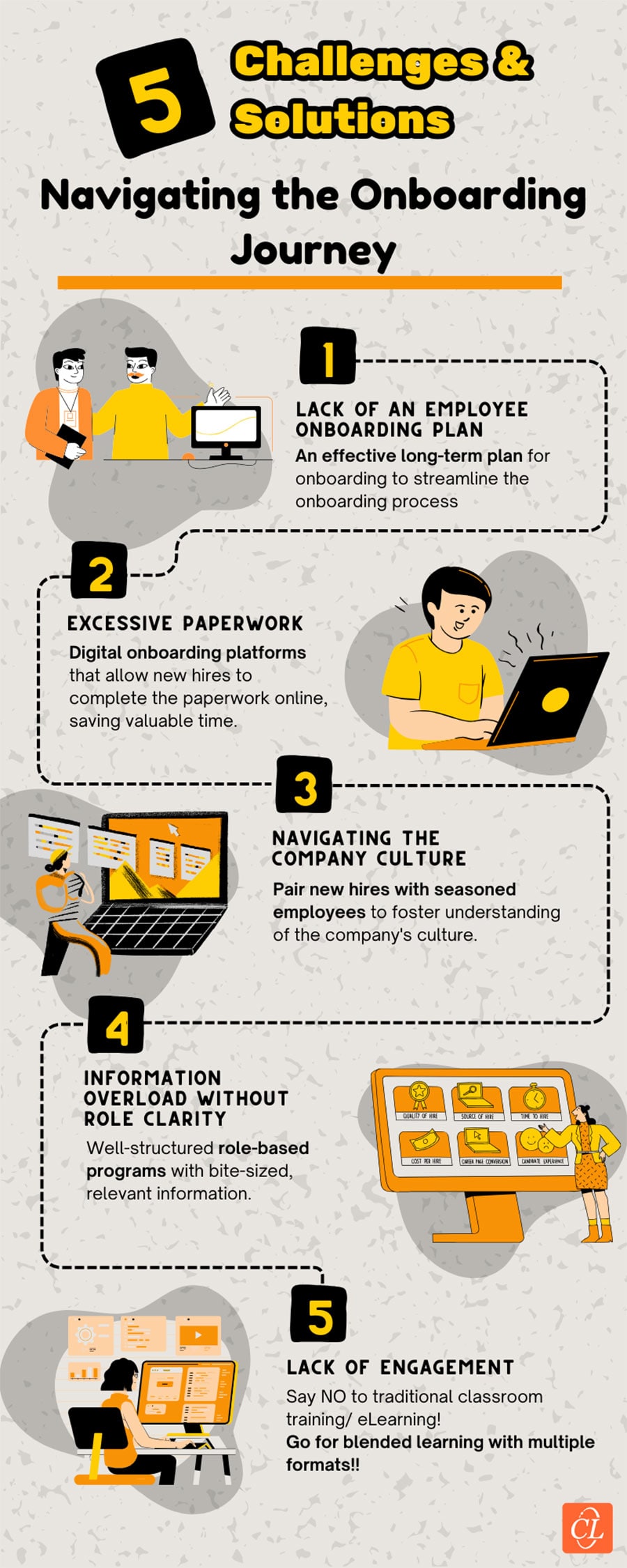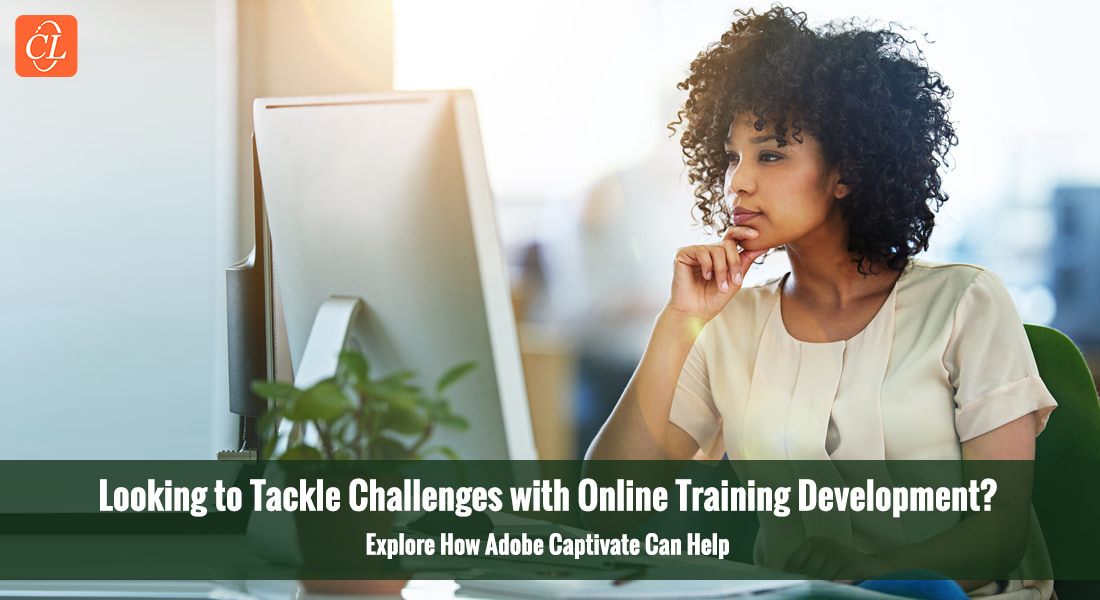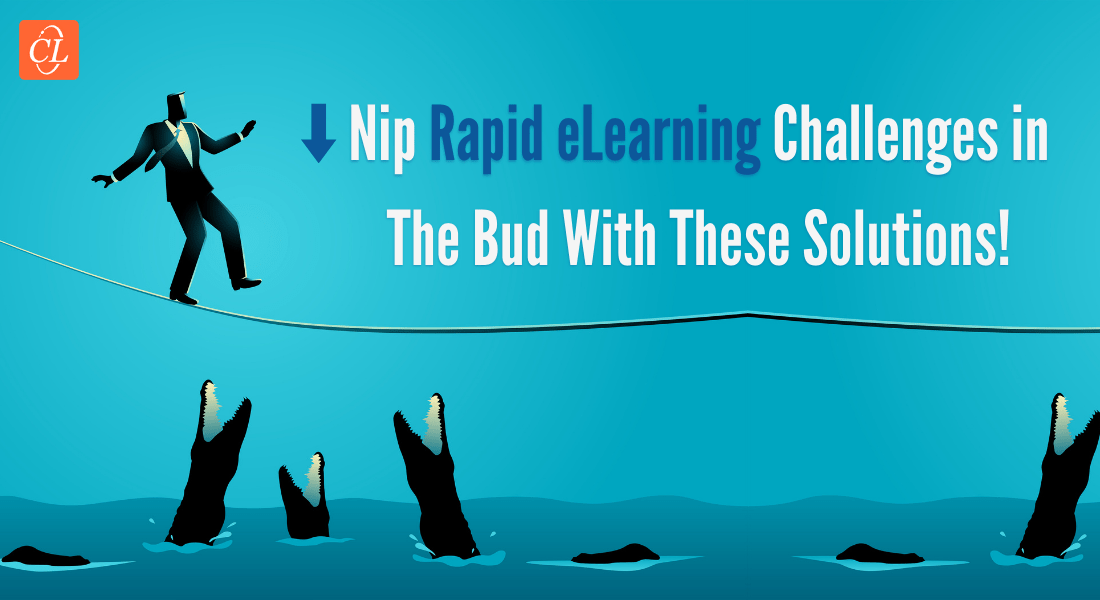Ways to Tackle Employee Onboarding Challenges Head-On [Infographic]
![Ways to Tackle Employee Onboarding Challenges Head-On [Infographic] Ways to Tackle Employee Onboarding Challenges Head-On [Infographic]](https://blog.commlabindia.com/hubfs/blogs/employee-onboarding-challenges-solutions-info.jpg)
Starting a new job is like venturing into an unknown territory with a mix of excitement and apprehension but the thrill of a fresh start can be overshadowed by the daunting unknowns of a new workplace.
Here, the power of effective employee onboarding emerges as a ray of reassurance. It is not merely a procedural checklist but a guiding hand, a thoughtful introduction that transforms a set of strangers into colleagues and an overwhelming office into a friendly space. Through personalized introductions, insightful training, and a supportive environment, onboarding empowers individuals to embrace the new chapter with confidence and, consequently, unlock their true productivity potential.
How does Effective Onboarding Impact Employee Performance?
- Effective onboarding instills a sense of belonging and purpose, enhancing employee engagement and confidence from the outset.
- Well-structured onboarding programs equip employees with the necessary skills and knowledge.
- A positive onboarding experience fosters stronger bonds between employees and the organization, reducing turnover rates.
- Onboarding immerses employees in the company's culture, values, and norms, aligning their behaviors and attitudes with organizational goals.
- Clear communication of performance expectations during onboarding helps employees understand their roles, goals, and responsibilities, facilitating goal-setting and performance management.
- Onboarding provides opportunities for skill development and continuous learning, enabling employees to adapt to changing job requirements and enhance their performance over time.
- Employee onboarding facilitates relationship-building with colleagues, managers, and other stakeholders, fostering collaboration and support networks that contribute to overall performance.
Why Is Employee Onboarding Challenging?
Employee onboarding can be challenging for various reasons. Firstly, the sheer volume of information and procedures can overwhelm new hires. Additionally, adapting to a new organizational culture, understanding job responsibilities, and building relationships within a team requires time and effort. Technological glitches in onboarding systems may hinder a smooth transition, and poor communication can lead to misunderstandings. Moreover, each employee is unique, requiring personalized approaches that cater to diverse learning styles and preferences. Combining these elements creates a complex system where navigating the onboarding process becomes a multifaceted challenge.
→ Download Now: Exploration and Discovery for Exceptional Onboarding
How to Overcome Employee Onboarding Challenges?
Wrapping it up!
The onboarding journey begins not on the first day at the desk but at the very essence of the hiring process. By prioritizing a seamless transition into the organization, companies not only equip new hires with the tools for success but also lay the groundwork for collaboration. As the synergy between onboarding and collaboration takes root, a thriving culture emerges where every individual is not just an employee but an integral part of the team contributing to the shared organizational goals. For practical insights on creating an engaging onboarding program, access our case study on new hire onboarding for a global biopharma major. Learn how we enhanced the employees' onboarding experience.







